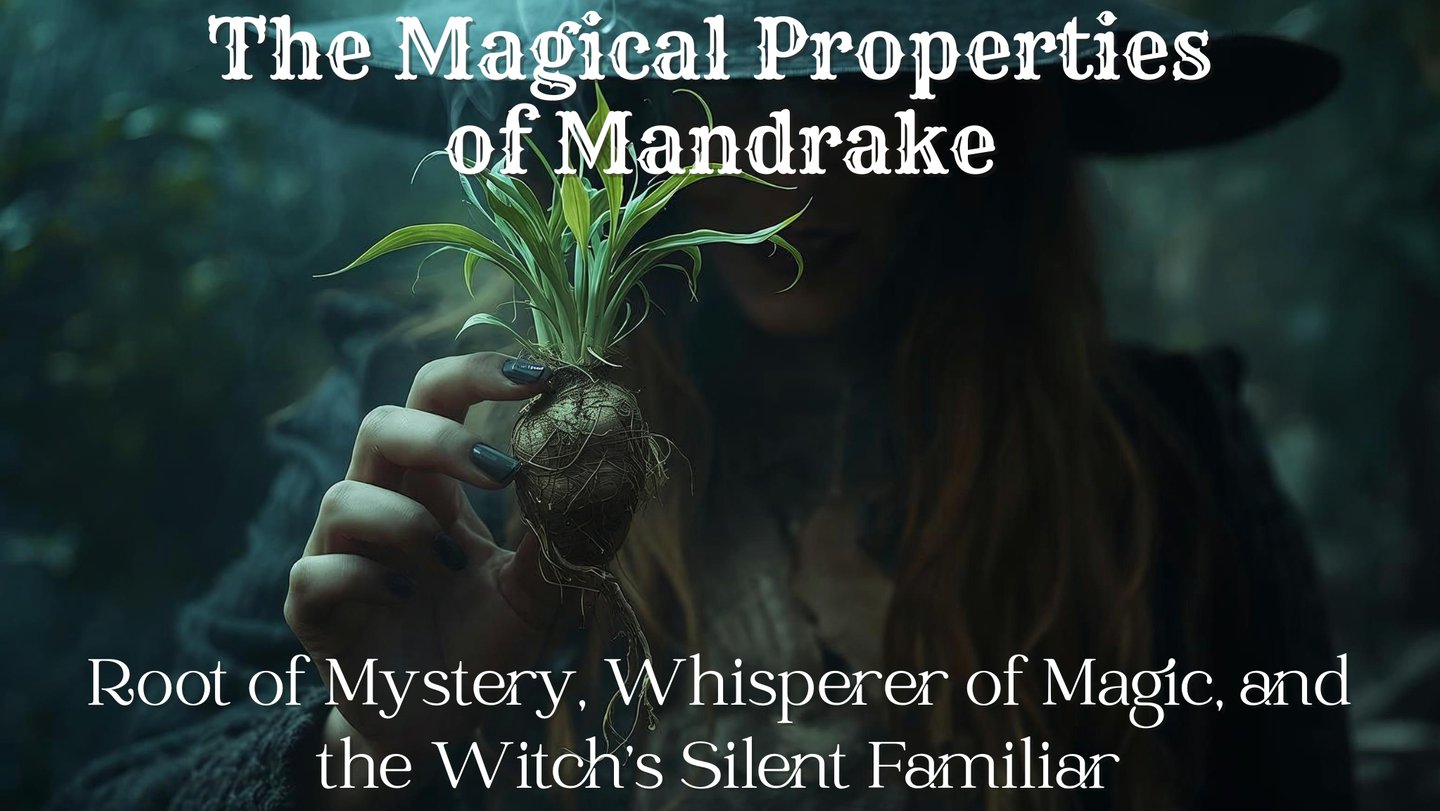Mandrake in Myth & Folklore
In the moonlit corners of the witch’s apothecary, wrapped in velvet and bound with red thread, lies a root unlike any other. It curls like a sleeping homunculus, its limbs knotted like human arms and legs. It is the Mandrake — a plant of legend, mystery, and incredible power.
With one foot in folklore and the other in the underworld, Mandrake (Mandragora officinarum) is not for the faint of heart. This ancient plant has long been associated with protection, dreamwork, fertility, and deep sorcery. And while real Mandrake is quite rare and highly toxic, its magic lives on in spellwork, talismans, and the whispered stories passed down from witch to witch.


1. Protection & Banishing
Mandrake’s spirit is fierce and loyal. In protective magic, it acts like a magical watchdog — guarding against curses, spirits, and those with ill intent. A Mandrake root hidden in the home is said to keep negative energies at bay.
Magical Tip:
Wrap a carved mandrake talisman in red cloth and place it near your front door or hearth for powerful home protection.
Magical Properties of Mandrake
The stories of Mandrake are as old as magic itself. In ancient times, Mandrake was believed to grow where the blood of hanged men spilled onto the ground, giving it a human-like form and supernatural power. Its screams, it was said, could drive a person mad or even kill them upon being pulled from the soil.
Because of these chilling tales, witches were said to tie a cord to the root, attach the other end to a dog, and let the animal pull the root free. If the dog survived, the witch would have in their possession a most powerful magical ally.
Despite its ominous origin myths, Mandrake was treasured for healing, fertility, protection, and magical insight. It was considered so powerful that owning even a carved replica could bring prosperity to one’s household.
2. Dreamwork & Spirit Travel
This root is deeply connected to the unconscious mind, dreams, and journeys between the realms. Ancient witches used Mandrake in flying ointments and vision potions to enter trance states or connect with the dead.
Witch’s Caution:
Due to its toxic nature, never ingest Mandrake. Instead, work with dried root or imagery in pillow sachets or meditations for lucid dreaming and astral protection.
3. Fertility & Creation Magic
Because of its human-like shape and association with ancient rites, Mandrake has long been used in fertility spells and rituals of creation — not just for childbirth, but for new beginnings, ideas, and sacred projects.
Spell Idea:
Bury a small Mandrake carving with a written intention beneath a flowering plant to nurture the seeds of your magical vision.
4. Power & Witchcraft
Above all, Mandrake is known as a witch’s familiar in root form. It amplifies spells, boosts psychic ability, and lends its spirit to magical workings. It’s often invoked during major rites, solstice celebrations, and ancestral rituals.
Altar Use:
Place a mandrake figure or root in the center of your altar during Sabbats to enhance the potency of your rituals and call in ancient power.
Magical Correspondences of Mandrake
Mandrake’s Whisper to the Witch...
“Beneath the ground I sleep, curled like a secret.
Pull me not in haste, lest you rattle the dead.
But treat me as kin, and I shall walk beside you —
between worlds, behind veils, beyond fear.”
Final Thoughts
Mandrake is not a flower to be picked lightly. It is a root of reckoning, a talisman of serious magic, and a gateway to deep transformation. Whether you're calling upon ancient powers, protecting your sacred space, or traveling between realms, Mandrake offers both ferocity and devotion.
To work with Mandrake is to court mystery. It asks you to respect the shadow and the silence, to honor the stories that have been buried, and to walk your magical path with courage.
And always — always — listen when the forest whispers.


